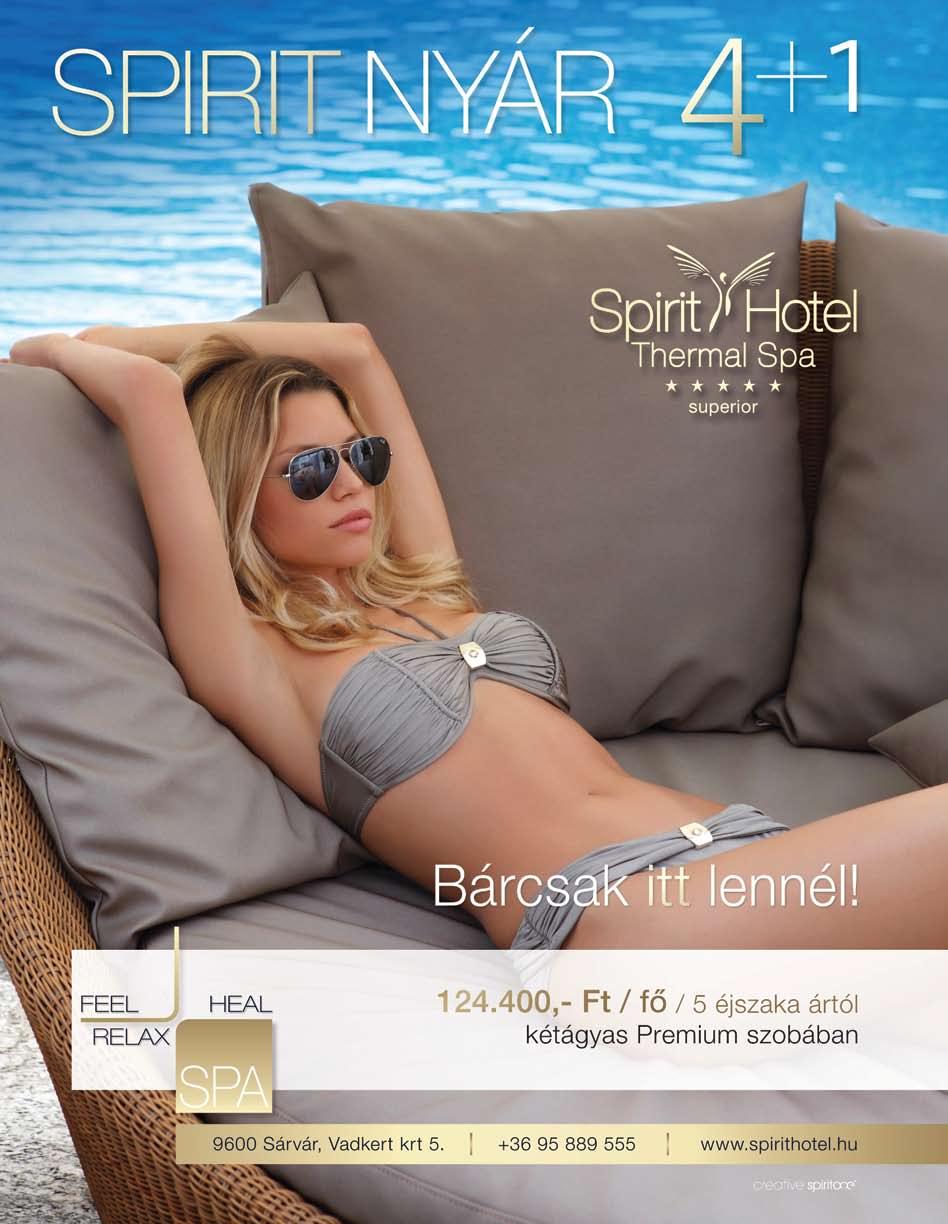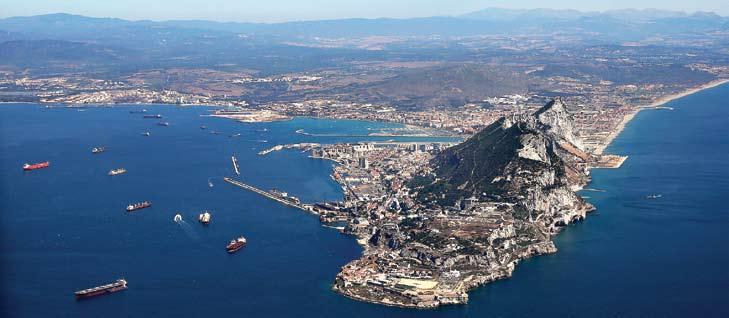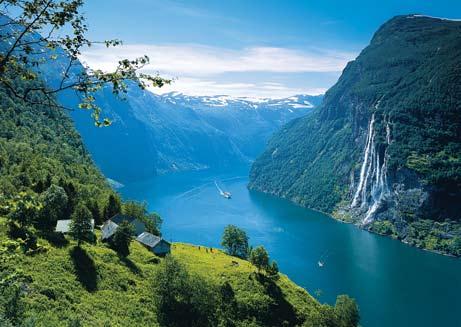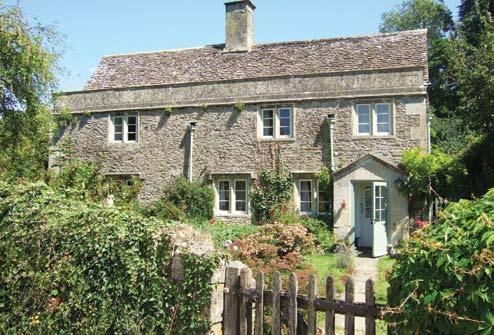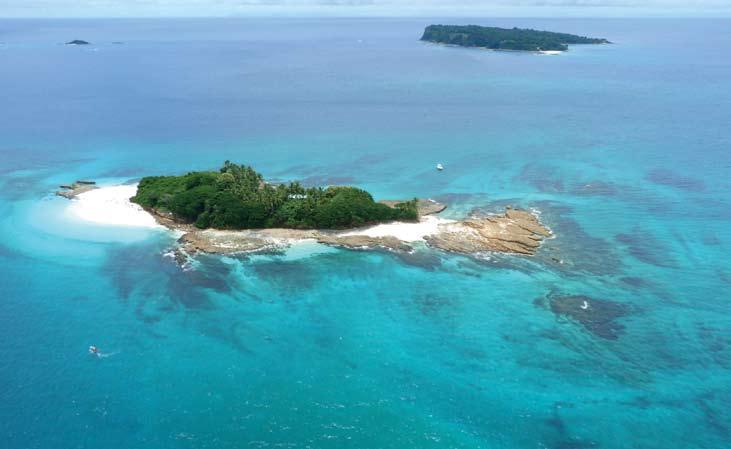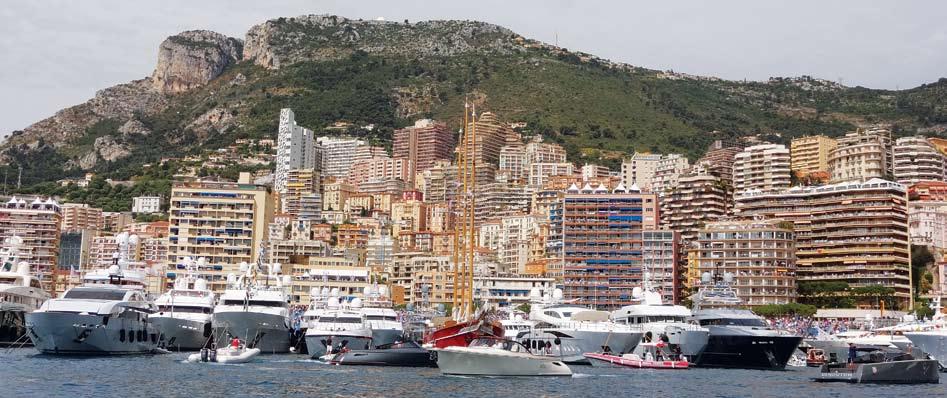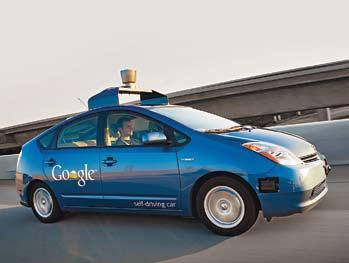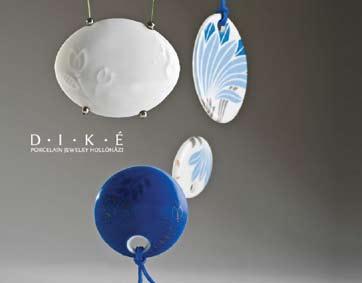
22 minute read
Angol összefoglaló
A car for 600 million
Ferrari, Lamborghini? These brands today are no longer comparable with the products of another Italian sportscar manufacturer – at least in terms of price. The well-off and collectors rather go for a Pagani Zonda, moreover a Pagani Huayra, which entered production last year. The
Advertisement
cream of society, or those who want to mix with the super rich, buy a dream car for 600 million forints.
The business, founded in 1992, was the idea of Argentinian-born engineer Horatio Pagani. He’s an associate of five times Formula 1 world champion Juan Manuel Fangio, whose 1954 racing car recently became the world’s most expensive auctioned vehicle, selling for the reasonable amount of 6.63 billion forints. Wealthy collectors can also turn their dreams into reality in a car showroom in the Hungarian capital, since now – naturally – you can get a Pagani in Budapest.
The Big Watch Collection
Experts have named the watch The Mona Lisa which is made from gold and crystal and is estimated to be worth thirty million dollars.
The Israeli Arsene Lupin – The media gave this name to the French born Naaman Diller, an infamous burglar who carried out a huge watch robbery. The name refers to a character from a well known novel that details the exploits of an elegant criminal. Diller succeeded in stealing the most valuable hoard of jewellery that has ever been stolen. The comparison might not look surprising knowing the fact that Paris has recently delivered 40 valuable watches back to Israel from the 106 pieces that were taken by Diller from the L.A. Mayer Museum of Islamic Art in Jerusalem in 1983. Now that these pieces have been recovered there are only ten watches unaccounted for from the loot that was estimated to be worth more than fifty million dollars. The loot did not only contain wristwatches but also small pendulums and stop watches.
The details of the sensational robbery, which had remained a mystery for the past 25 years, have finally been discovered. When the investigation into the robbery begun Diller was the chief suspect, however after some time the Israeli authorities followed other leads. They made little progress and it was thought that the identity of the perpetrator of this crime would remain a mystery. That was until 2006 when a watchmaker based in Tel Aviv received a tip off regarding an anonymous American Lady who was selling dozens of watches from the stolen collection. The jeweller contacted the aggrieved Jerusalem Museum, who decided to act with discretion and repurchase the precious works of art for 40 thousand dollars. Amongst the pieces bought back by the museum was the most expensive and most precious watch from the collection. This particular watch was created in the 18th century by the French Craftsman Abraham Louis Breguet for his very special client Queen Marie Antoinette. Experts have named the watch The Mona Lisa, it is made from gold and crystal and is estimated to be worth thirty million dollars. Other pieces that were bought back by the museum include a Breguet masterpiece dating from 1813 and known as Sympatique and a pistol shaped watch that originates from the same period.
The collection was left as inheritance by Sir David Lionel Salomens, the first Jewish Mayor of London who was elected in 1855. The valuable heirlooms were passed onto his daughter who in turn donated them to The L.A. Mayer Museum, of which she was the founder. The museum was named
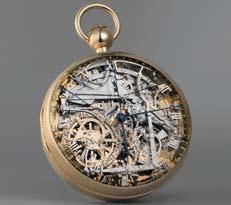
after the daughter’s professor of Islamic studies.
Despite the museum’s promise of discretion, upon receiving the stolen goods they contacted the police. The Israeli authorities were assisted by American officers in their investigation. The anonymous seller was identified as Nili Somrat, Diller’s widower. Diller died of cancer in 2004, on his deathbed he revealed the details of the burglary to his wife. Diller also revealed the whereabouts of the bounty which had been hidden in various bank treasuries in France and America. He bequeathed the valuables to his wife who decided to sell them. She kept a few pieces from the collection in her Los Angeles home which was later searched by the police.
Porcelain jewellery
Both the production of jewellery and the manufacture of porcelain can look back on centuries of traditions in Hungary. However, the creation of porcelain jewellery has so far mostly remained in
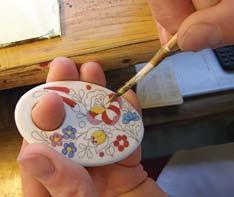
the hands of specialist galleries. The Hollóház Porcelain Manufactory has declared its aim of starting to produce spectacular costume jewellery, which will combine quality porcelain, fashion and variety, and which will revisit the traditions and, starting from there, create items of jewellery for the modern woman. When someone buys this jewellery they are purchasing a creation which is a worthy accessory for their clothing. The idea is for the jewellery to be in the reach of everyone, in the form of an accessory befitting any costume. Porcelain constitutes an outstanding basic material for jewellery production, and like precious metals it conceals within itself craftsmanship, the noble material ensuring both value and tradition. The great advantage of porcelain is its plasticity and the fact that it can be decorated, thus with its use jewellery can be created to match many types of taste. Furthermore, the cost of basic porcelain is much lower than precious metal, yet its notional value is on the same level. Diké is a costume jewellery brand which attracts those seeking traditional values as well as people responsive to new ideas, people for whom, instead of a material comforts and the endless chasing after trends, aesthetic considerations and traditional values are more important.
MySPIRIT skincare
The health-conscious approach of the Spirit Hotel harmonises with the philosophy of the new bio cosmetics brand, the mySPIRIT skincare. This philosophy is based on the dedication to health, and the respect of natural harmony. The Hungarian professionals and investors were inspired by this idea when they decided to realize
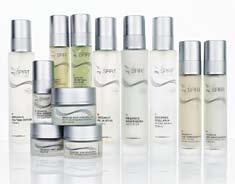
the creation of a pampering, bio cosmetics product range and a unique treatment. The bio cosmetics brand complying the highest of standards, the mySPIRIT skincare was introduced to the market in 2014 after two years of dedicated work.
The mySPIRIT skincare is a unique luxury cosmetics brand offering bio facial care products combined with customised treatments for those who regard health and harmony a priority in every segment of their lives.
The mySPIRIT skincare brand harmonises the operation of the skin tissue with bio cosmetics complying the highest of standards and with customised treatment, making the natural relationship closer with the individual and nature
The mySPIRIT skincare cosmetic products are made from the precious treasures of nature and comply with the highest standards. The BIOKONTROLL licence demonstrates that more than 95% of the ingredients come from bio cultivation, and whose way from the growing area to the end-product can be detected.
The mySPIRIT skincare cosmetic products do not only treat the superficial skin problems by creating the harmony of the skin but also they make the skin brighter and more lively. The organic agents restore the balance of the lipid layer protecting the skin from outside and optimise circulation. They hydrate and nourish the skin therefore activating the self-regeneration processes of the skin, making it more flexible and resistant to harmful environmental effects.
The secret of the mySPIRIT skincare treatment is that it is customised- with exclusive bio agents, water energised with the natural power of half-precious stones and with customised bio oil mixtures.
These unique, exclusive cosmetics treatments can be first enjoyed by guests in the Spirit Hotel Thermal Spa*****SUPERIOR and the NaturMed Hotel Carbona****SUPERIOR in Héviz, which are dedicated to health protection and have been awarded many times
The facial care products can be exclusively purchased in these two hotels and the in the webshop myspirit.hu.
Amazing phenomena
We believe what we see, what we hear, what we smell, or taste, or the form or the surface we touch. We rely on our sensory organs, though sometimes they play tricks on us, imperceptibly taking over direction of our actions – there’s a ringing in our ears; on the ‘advice’ of our sense of smell, we fall in love; a still picture appears to move.
An interactive exhibition recently showed the structure and workings of these organs, summoning up long-forgotten aromas and a taste of the world of illusions. Explanations were sought for numerous astounding phenomena, such as what’s the cause of the déjà vu feeling or various phobias, and whether you can learn the intricacies of the tongue.
Hearing. Soft melodies, slight noises, harsh sounds. It’s interesting why we judge certain sounds to be pleasant or irritating.
Sight. Is the image still or moving? Do we see figures emerging from a coloured pattern? Do we see a spatial image or do the lines move oddly on a plane? Just a little deception, a certain clever projection and the eye immediately wonders, and we hesitate before the image. We face a sample of optical illusions.
Smell. Long forgotten smells bring back old memories. When can we rely on our nose and when not? When do the aromas lead us by the nose? Taste. Everyone remembers the tastes of childhood – but why? Why do we feel menthol is cold and pungent paprika hot? The tongue is capable of distinguishing different tastes together, yet does it warn us if we are consuming something harmful?
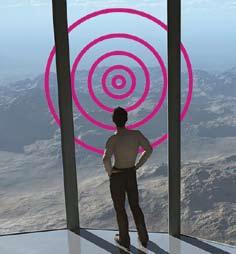
Expedition to Mars
Recruiting is underway to find people for the first colony on Mars. According to plans, people will be living on the planet in ten year’s time. However, anyone who goes to live there won’t be able to return to Earth.
Recently, the world-famous scientist Stephen Hawking made a striking statement: “Humanity has only 200 more years

on Earth.” According to another expert, engineer and doctor of astronautics Buzz Aldrin, who was the second person to step onto the Moon, we could make another planet inhabitable in less than 50 years. However, to begin with we would have to prepare for that on the Moon, and using the experience gained there, send people to one of the moons of Mars to construct a Mars base on that. It would be easier to return to Earth if, instead of Mars, we set off from Phobos, since the smaller the celestial body, the lesser its gravity.
The first journey around Mars would be financed privately and organised by the Inspiration Mars Foundation. They are looking for a married couple for the trip, though that wouldn’t be enough – members of the potential team would have to be able to turn their hands to all sorts, to be able to make repairs should something go wrong on the way. They would set off in January 2018, in August they would be flying 160 kilometres from Mars and they would return to Earth in May 2019. In the course of the flight they would utilise the gravitational force of Mars. This would whirl the
spacecraft back and thus less fuel would be required.
The Dutch Mars One project aims to launch a mission in September 2022. It would cover the costs by broadcasting every moment in the manner of a reality show, from the selection of travellers, through the journey itself, to life on Mars. Last year, in a two-month period more than 100,000 people applied to join the expedition. From among them 28-40 candidate colonists have been selected. They are starting eight years of preparation and training in a completely closed environment, in an exact copy of the Mars colony established on Earth. Every second year they will be sealed off from the outside world. Then they still have the possibility of ‘return’. However,

in 2023 at the end of the journey, having spent seven months in a miniature space capsule, four of them will arrive at a colony constructed from modules assembled with hard work and there they will remain for ever. Currently the technology necessary for the return journey is not available and probably that situation will remain for a further 50 years.
Cars without drivers
In California cars without drivers are allowed, provided someone is in the vehicle monitoring its movement. Google staff have already covered half a million kilometres a day in such vehicles.
California was not the first to allow private vehicles driven by robots. They are also operating in Florida and Nevada, and in the latter Google engineers have been continuously experimenting with computer-driven machines. The new California law is similar to the one in Nevada in that someone must be in the vehicle who can take over the driving if necessary.
The movement of these specialist vehicles is guided by a great number of built-in sensors and cameras, plus satellite-based navigation equipment. Using the information supplied, an on-board computer determines the right direction, the distance to maintain behind another car in front, and related matters. The advantage of the system is that the computer never gets tired and its speed of reaction is quicker than that of a human.
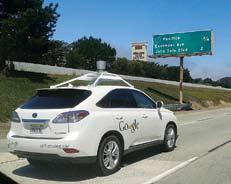
Turquoise superyacht
The Jet Set Côte d’Azur is an EnglishRussian multilanguage magazine, which is published by the Hungarian LKG Media Kft., which is the producer of the Unique magazine as well. The Jet Set magazine is spread all around the France Riviera, for free. Officially it has been debuted at the weekend of the Monaco Formula -1 Grand Prix, in Monte Carlo at the end of May, 2014..
On the Turquoise superyacht party- managed by the My Yacht Group, Nicholas and Annabelle Frankl - 120 VIP guests, the elite of Monaco, got acquainted with Jet Set Côte d’Azur magazine. Albert II, Prince of Monaco accapted the invitation for the Turqouise superyacht as a Royal guest.
The Jet Set magazine distributes three times a year, from Monte Carlo, through Nizza to Cannes, in various hotels, bars, heliports, for wealthy Russian and English speaking tourists.
Gábor L. Kelemen, the publisher of Jet Set Côte d’Azur magazine, was welcomed with many gratulations by the guests of the Turquoise superyacht, where they cheered with Gold Emotion French Champagne, which has small 24 carat gold flakes floating in.
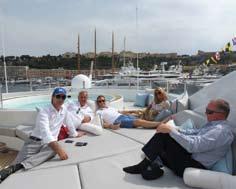
Islands for sale
Arab sheikhs have been purchasing islands for themselves since the 1950s, where possible in ideal locations, while a few years ago shrewd entrepreneurs identified latent opportunities in the desires of noted actors, businesspeople, musicians and other artists. Catalonia’s La Vanguardia recently summarised the intentions of these otherwise ‘no-name’ customers regarding such islands. One of the companies drawing up lists of islands, the Mosco’s Group, has developed a profitable line of business. The supply is huge and the potential buyers can choose the place where they want to retreat from the world. The American Johnny Depp, one of the highest paid actors, can allow himself to purchase an (uninhabited) island anywhere in the world. While filming Pirates of the Caribbean he became infatuated with the world of islands, and in 2004 quickly bought one of the islands of the Bahamas for 3.6 million dollars, so he would be able to chill out there between the shooting of two films. Britain’s Richard Branson, however, was guided only by business con-
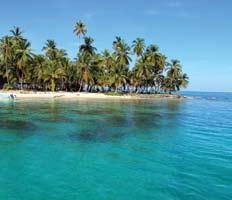
cerns – and in this he surely represents the majority. Back in the 1970s he bought Necker Island, part of the Virgin Islands constituting a UK overseas territory, where he established his business empire. He receives guests in his luxury hotels set in dream surroundings, but the Virgin company also looks after its high-achieving employees here. Depp’s colleague Leonardo DiCaprio had conservation tourism in mind when he bought an island in Belize in 2005. He experiments with tourism involving the use of renewable energy sources and respect for the environment.
Harry Potter’s village
Lacock is a village in Wiltshire, England, 5km from the town of Chippenham. The village is owned almost in its entirety by the National Trust, and attracts many visi-
tors by virtue of its unspoiled appearance. Lacock is mentioned in the Domesday book, with a population of 160–190; with two mills and a vineyard. Lacock Abbey was founded on the manorial lands by Ela, Countess of Salisbury and established in 1232;and the village— with the manor — formed its endowment to „God and St Mary”. Lacock was granted a market and developed a thriving wool industry during the Middle Ages.
At the Dissolution, the Abbey and estate, including the village were sold to William Sharington, later passing into the Talbot family by marriage.
Most of the surviving houses are 18thcentury or earlier in construction. There is a 14th-century tithe barn, a medieval church, and an inn dating from the 15th century and an 18th-century lock-up.
In 1916 Charles Henry Fox Talbot bequeathed the Lacock estate to his niece, Matilda Gilchrist-Clark, who took the name of Talbot. The estate was given to the National Trust in 1944 by Matilda Talbot – comprising 284 acres (1.15 km2), the Abbey, and the village.
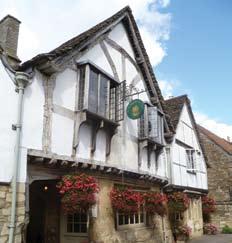
The Church Lacock was established in the late 11th century.
The village has been used as a film and television set, notably for the 1995 BBC production of Pride and Prejudice, the 2007 BBC production of Cranford. It has also made brief appearances in the Harry Potter films Harry Potter and the Philosopher’s Stone and Harry Potter and the Half-Blood Prince. Most recently, in the Spring of 2012, it was a filming location of the fantasy adventure movie Mariah Mundi and the Midas Box, which is scheduled for release in 2013.
It is interesting, that there is no harry Potter shop in the village, in spite of a lot of parents bring their children to show themn the birth place of the movie star, altough he was just a creature of phantasy.
Norwegian fjords
In summer the sun warms up everything, bringing new energy, and there’s permanent daylight beyond the Arctic Circle. At this time the fjords present their most beautiful face. You can plan trips that get the
adrenalin going, in the north catch sight of polar bears, further south make friends with reindeer, and right in the south, say in Bergen, do some sightseeing. You can experience the finest panorama by taking the Floiban cog-wheel railway to the top of the hill.
Bergen is the gateway to the fjords, which you can appreciate from the height. Wonderful excursions start from here, as do the majority of fjord cruises. A four-hour trip in a small boat, which is able to visit every inlet, costs just 20,000 forints per person. Bryggen, which features on the World Heritage List, is part of the city. It’s the old quarter and you can find buildings here constructed in medieval times, in the early 14th century. In effect, it’s an open-air museum with lost of gift shops and galleries. It’s worth buying a seal fur coat here, even if a short, waist-length coat costs about one million forints. A seal fur coat is guaranteed to be waterproof, since the seal lives in water, so of course water just runs off the coat.
Norway’s largest fish market can be found in Bergen, near the harbour. It’s open every day from April to September. King crab and whale meat is fried, and reindeer sausage is available, as well as other tasty foods such as wild salmon.
It is a perfect time for a cruise or kayaking. There are excellent kayaking tours available in Tromso, which lies beyond the Arctic Circle and is the gateway to the North Pole. Fishing is also possible. It’s worth learning from the Norwegians how to fillet a fish, as they are masters of the trade. And it’s no mean matter to be able to taste shrimps freshly brought from the sea. If you want to immerse yourself and learn about the underwater world, then the sea aquarium in Atlanterhavsparken is a must. It’s Europe’s largest sea-water aquarium.
In Vadso, Lofoten and Hammerfest you can even play golf, and what’s special is that you can tee off even at midnight since, as mentioned, the sun is always shining. Hammerfest has the world’s most northerly golf course. The Helgeland coastline is noteworthy, especially in view of its Seven Sisters formation. Seven wonderful peaks rise from the sea, side by side, as part of the Torghatten mountain.
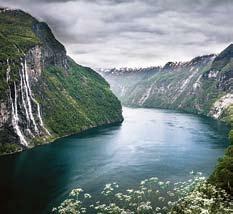
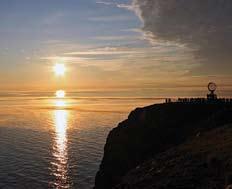
Gibraltar
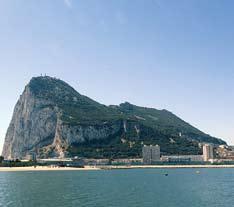
The 4 August this year marked the 305th anniversary of the capture of Gibraltar by a British and Dutch fleet during the War of Spanish Succession. Then with the 1713 Treaty of Utrecht the Spanish Kingdom almost entirely gave up claims to the territory. During the Second World War the British prime minister Winston Churchill promised General Francisco Franco that if he didn’t support Hitler Spain would get back Gibraltar when hostilities had ceased. However, the British never thought of fulfilling their promise, so the dictator turned for help to the UN, which finally decided in favour of Spain in 1967. But Britain frustrated the UN decision. It strengthened the economic independence as well as the selfassurance of the crown colony, and even gave it two constitutions.
Cooling T-shirts In line with a British superstition, the British are strongly attached to the very Technology cheeky Gibraltar macaque monkeys, since they say that if they become extinct then Gibraltar would be lost.
There is a border between Spain and Gibraltar, and passports are required to cross. It’s rather chaotic and can take up to a couple of hours. That’s partly because 10,000 people from the nearest Spanish town work in Gibraltar, partly because clever people cross over since cigarettes, petrol, jewellery and drinks are cheaper there, and partly because tourists are drawn to the huge, rocky territory.
The top of the rock can be reached by lift and from there a wonderful panorama opens up, but to reach one of the sights from there you have to walk two or three hours in the heat, which few people can cope with. Hence there are minibuses to take the tourists and avoid the hike. It doesn’t cost any more.
Olympic Hopes Trophy
The European Olympic Hopefuls Tournament, a competition series launched in 2013, continued on 17-20 April this year, hosted by the Hungarian Golf Federation and the Pannónia Golf Club. The number of participating countries increased to seven – the Czech Republic, Serbia, Slovakia, Slovenia, Austria, Russia and Hungary – with their best male and female golfers competing with teams of six. The opening ceremony took place in the Hunters’ Hall of Parliament at the invitation of deputy prime minister dr. Zsolt Semjén. The placing was decided in the framework of a Match Play competition.
The Hungarian team coached by Gergő Böndicz fulfilled expectations. In fact the female golfers exceeded expectations, finishing in second place after the Czechs though with equal points, and they actually defeated the Czech team. Hungary’s young male golfers kept their heads high, finishing in fifth place ahead of the Russians. Work began last year matured and they have experienced tremendous development.
The idea of a competition for the most talented under -17 male and female golfers was born among Austrian, Czech, Slovak and Hungarian golfers. The aim of the founding federations was that from 2014 the tournament would increase to six competition stages, thus ensuring for the future Olympic participants the possibility of joint training camps and competitions. The first tournament of the series, which was launched in 2013, was held in Hungary. Each country can hold the competition for a maximum of two consecutive years. Next year the Slovaks will host the Olympic golf hopefuls. The Hungarian colours were worn by (females) Csilla Rózsa, Boróka Briglovics, Adél Vadkerti, Julianna Paál, Laura Czernecki, Maya Tóth and (males) Olivér Csányi, Dávid Rózsa, Dániel Rózsa, Bálint Závaczki, Zsombor Holló and Bálint Greff. Following success in American competitions and training camps, Csilla Rózsa stepped on a Hungarian course for the first time this year. The competitors played on the top-quality fairways and greens of the Pannónia Golf Club. Guests included Csilla Rózsa’ American coach Tom Bur-

Daniel Rózsa is a promising talented player nett, director of the Tom Burnett Golf Academy and the World Junior Golf Series. – I’m very pleased with the achievements of our teams – said Hungarian team coach Gergő Böndicz. – The women were aiming for third place and the final result put them a hair’s breadth ahead of that. We aimed for fifth place for the men and to put pressure on the teams which we were far behind last year, and we succeeded. Last year we began the work and since then the team members have gone through a spectacular development, which we can be proud of. That the girls defeated the finally winning Czechs and that the boys

were in reach of the Czechs, Slovenes and Slovaks, and came ahead of the Russians is a great feat. The best female player of the competition was Csilla Rózsa, who has won all her contests. Her professional career will start from next January. In addition, I’d like to highlight Adél Vadkerti and Boróka Briglovics. The oldest among the boys, Olivér Csányi and Dávid Rózsa, played the best, but I should also mention Zsombor Holló for his promising performance. The younger ones, namely Dani Rózsa, Bálint Greff and Bálint Závaczki, also showed great potential.
This year the Hungarian Olympic hopefuls will be able to play in 8-10 tournaments, so that they can polish their skills and increase their competition experience.

